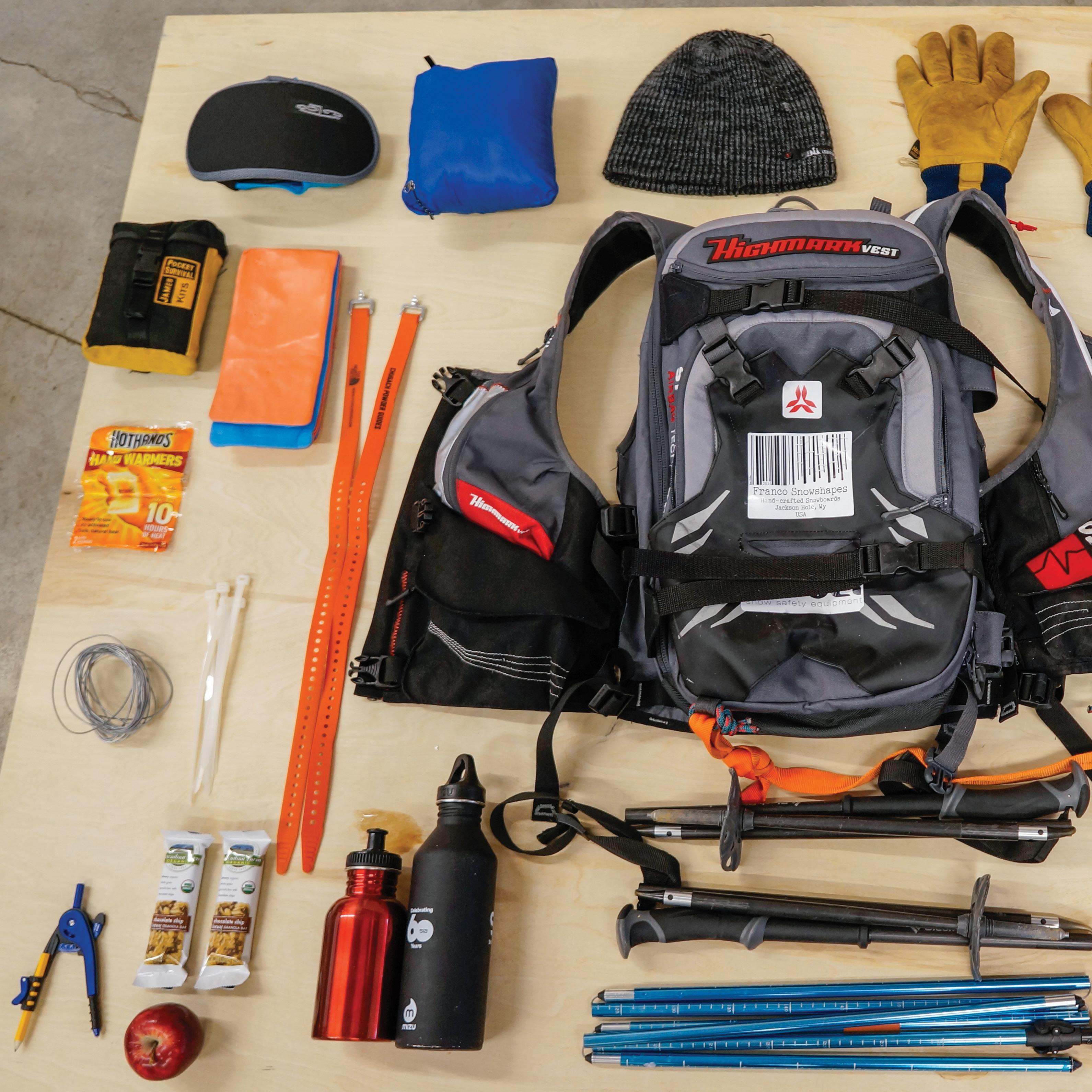
3 minute read
Mikey Franco
what’s in your pack?
Crack is wack, and so is forgetting your beacon and a snack.
Advertisement
WORDS & PHOTOS: MIKEY FRANCO
Ever heard someone say, “Dude! My new pack is sooooo light!” Well, considering the extent of what some folks are carrying includes a GoPro (and selfie stick), a cookie, and maybe an extra hat, it’s no wonder that pack is “sooooo” light.
What you put in your pack can be compared to what you put in your body. If you eat food with poor nutritional value, you may not have what it takes to help fend off colds and disease. The same goes for your pack. If nothing useful is in it, how do you expect to reduce your risk of exposure, or to help someone if something actually goes wrong?
I hear it all the time – a common statement my friends make when they pick up my backpack: “Man, what do you have in this thing?” My answer? “I’ve got what I need.”
But what I need does not pertain to what makes me feel good, what makes my pack “light as hell,” my Go Pro, libations or a spare pair of shades. What I need pertains mostly to you.
Being a guide, I have to carry quite the arsenal. Having some extra gear on hand for clients is essential. I also have to look out for myself by having the proper gear to keep me warm, dry, and fed too.
Because of this, I decided to go with a vest. I like being able to balance the load by distributing some weight on the front of my body. Being a snowboarder, a heavy pack leads to fatiguing heelside turns and overleveraged toeside turns. The vest helps me balance that out. My pack is a SnowPulse Highmark Vest, airbag. Retrofitted with snowboard straps.
What should be in my pack, you ask? Well, let’s consider some things that might make you wish you never went on this adventure in the first place:
You or your buddy is… cold, wet, hungry, tired, in danger, hurt, lost, dealing with broken equipment… or some unfortunate mixture of these predicaments.
What do you have in your pack? How will you use what you’ve got to help the situation? Take a look at what I keep in my pack and how I use what I bring.
BAILING WIRE FIRST AID KIT
EXTRA GOGGLES
EXTRA DOWN LAYER EXTRA HAT
COMPRES -SION STRAPS
ZIP TIES
What to carry
A SNACK WATER
PROBE EXTRA GLOVES
CHARGED CELL PHONE
COMPASS
DUCT TAPE

BEACON SNOW FIELD BOOK
SHOVEL
Note: make sure your first aid kit is designed to handle large wounds like fractures and dislocations. Band-Aids alone ain’t gonna cut it.
Now let’s play the matching game:
I am or someone else is cold: extra compressible down layer.
I am or someone else is wet: don’t get wet!
I am or someone else is hungry: calorie-heavy snack, more if I am going to be out for long.
I am or someone else is tired: small thermos of coffee or tea; chocolate. I also bring sweets, electrolytes and something salty to help with bonking.
I am or someone else is in danger: cell phone, compass/map, shovel to dig a shelter, shovel, beacon.
I am or someone else is hurt: first aid kit, cell phone, down layers.
I am or someone else is lost: compass, cell.
I have or someone else has broken equipment: duct tape, bailing wire, compression straps.
Notice I started each statement with “I am or someone else”? When heading into the backcountry, I must take the safety and comfort of my partners or clients into serious consideration. I wear this pack for YOU! I hope you’ll wear one for me.
My parting words to you:
Drink water. Tell someone where you are going. Take a first aid class, and an avy course. Be considerate. Be a friend. Be willing to say ‘No’ or turn around. Do whatever it takes to return home.
These, my friends, are the ethics of being prepared. mf
Born Amish, Mikey Franco was saved by snowboarding at a very young age. Besides snowboarding, he likes homemade meatballs, Irish sweaters and skateboarding barefoot. @francosnowshapes










